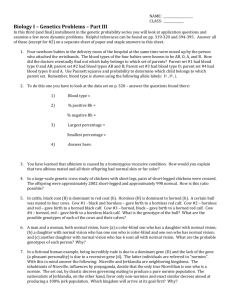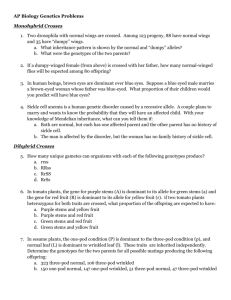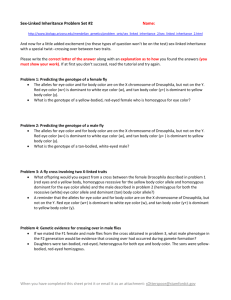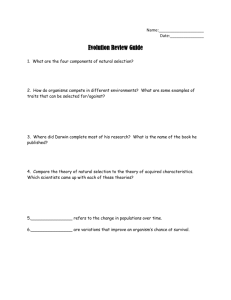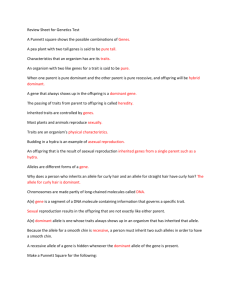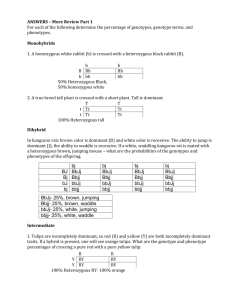dihybrid word problems
advertisement
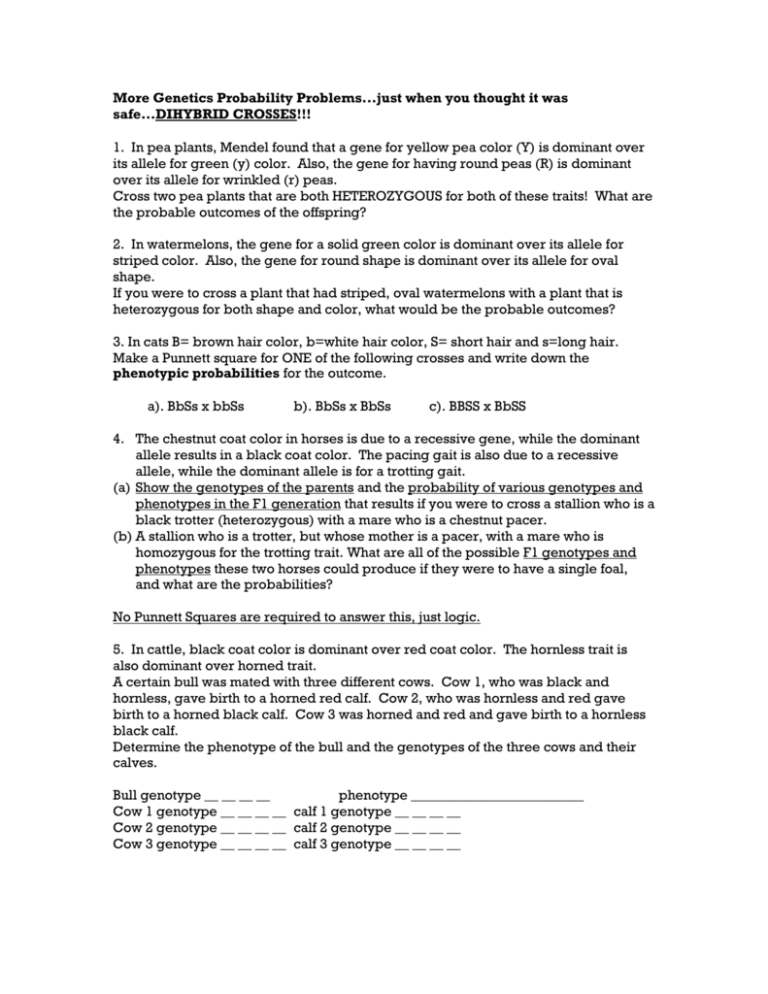
More Genetics Probability Problems...just when you thought it was safe...DIHYBRID CROSSES!!! 1. In pea plants, Mendel found that a gene for yellow pea color (Y) is dominant over its allele for green (y) color. Also, the gene for having round peas (R) is dominant over its allele for wrinkled (r) peas. Cross two pea plants that are both HETEROZYGOUS for both of these traits! What are the probable outcomes of the offspring? 2. In watermelons, the gene for a solid green color is dominant over its allele for striped color. Also, the gene for round shape is dominant over its allele for oval shape. If you were to cross a plant that had striped, oval watermelons with a plant that is heterozygous for both shape and color, what would be the probable outcomes? 3. In cats B= brown hair color, b=white hair color, S= short hair and s=long hair. Make a Punnett square for ONE of the following crosses and write down the phenotypic probabilities for the outcome. a). BbSs x bbSs b). BbSs x BbSs c). BBSS x BbSS 4. The chestnut coat color in horses is due to a recessive gene, while the dominant allele results in a black coat color. The pacing gait is also due to a recessive allele, while the dominant allele is for a trotting gait. (a) Show the genotypes of the parents and the probability of various genotypes and phenotypes in the F1 generation that results if you were to cross a stallion who is a black trotter (heterozygous) with a mare who is a chestnut pacer. (b) A stallion who is a trotter, but whose mother is a pacer, with a mare who is homozygous for the trotting trait. What are all of the possible F1 genotypes and phenotypes these two horses could produce if they were to have a single foal, and what are the probabilities? No Punnett Squares are required to answer this, just logic. 5. In cattle, black coat color is dominant over red coat color. The hornless trait is also dominant over horned trait. A certain bull was mated with three different cows. Cow 1, who was black and hornless, gave birth to a horned red calf. Cow 2, who was hornless and red gave birth to a horned black calf. Cow 3 was horned and red and gave birth to a hornless black calf. Determine the phenotype of the bull and the genotypes of the three cows and their calves. Bull genotype __ __ __ __ phenotype _________________________ Cow 1 genotype __ __ __ __ calf 1 genotype __ __ __ __ Cow 2 genotype __ __ __ __ calf 2 genotype __ __ __ __ Cow 3 genotype __ __ __ __ calf 3 genotype __ __ __ __ 6. In some breeds of dogs, the gene that controls the characteristic of barking while hunting is dominant over the allele that controls the characteristic of being silent while hunting. Also, erect ears are dominant over drooping ears. A certain male dog is crossed with two different females. The first female is a droop-eared barker. The puppy produced is an erect-eared, silent-hunting dog. The second female bred is an erect-eared, silent-hunting dog. Her puppy is a droop-eared barker. What are the genotypes for the (a) male dog; (b) the two females; and (c) their puppies? (d) What is the phenotype of the male dog (sire)?


